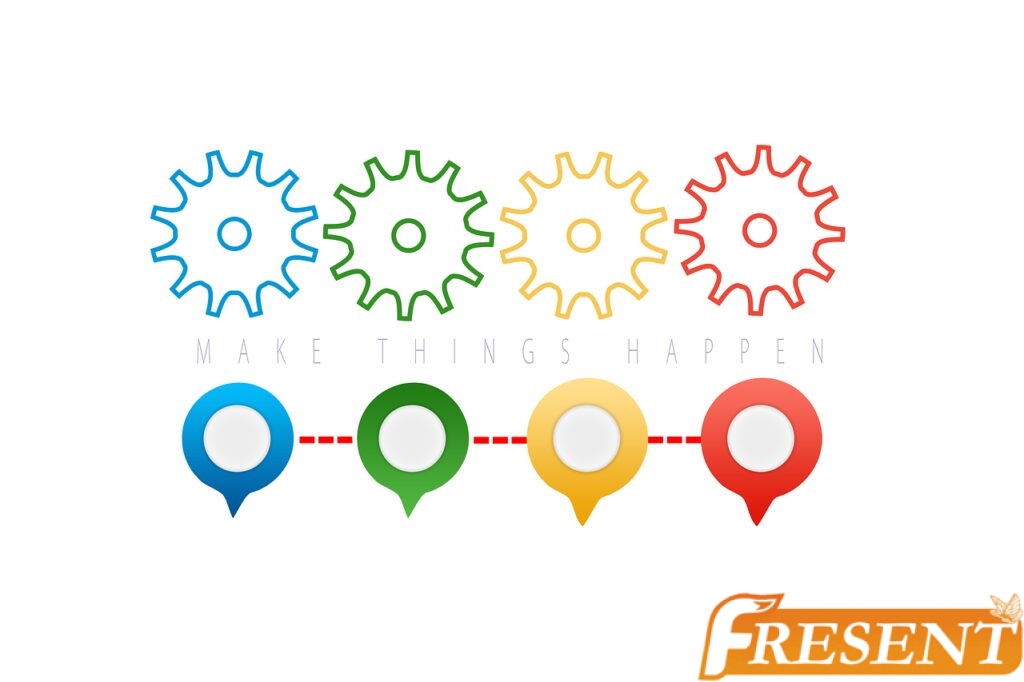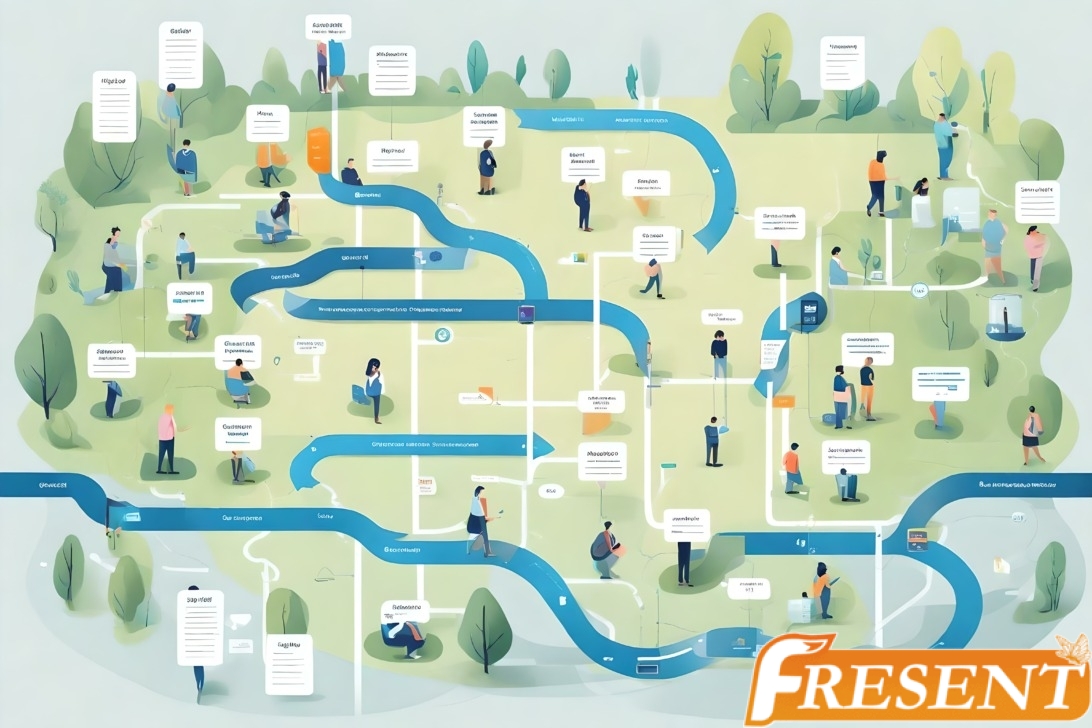Are you struggling to convert potential customers into paying users for your SaaS product? Do you feel like there are gaps in your customer journey that are preventing them from taking action? If so, then it may be time to consider customer journey mapping.
Customer journey mapping is a process of understanding the steps and touchpoints that a potential customer goes through before making a purchase or becoming a user. By analyzing this journey, you can identify areas where customers may drop off or become disengaged and make improvements to optimize their experience. In this article, we will explore the benefits of customer journey mapping for SaaS companies and provide practical tips on how to map out your own customer journey.
Understanding the SaaS Customer Journey
You’re about to embark on a journey through the eyes of a SaaS customer, where you’ll experience every touchpoint and gain a deep understanding of their needs and desires. Understanding customer behavior is crucial in optimizing the customer journey for better conversion rates. To achieve this, mapping customer interactions is essential because it helps identify potential pain points or areas that need improvement.
Mapping customer interactions involves tracking every step of the customer’s journey from awareness to purchase and beyond. This process enables businesses to collect data on how customers interact with their product or service at each touchpoint. By analyzing this data, companies can determine what works well and what doesn’t work, allowing them to make necessary adjustments for an improved customer experience.
Incorporating these insights into your business strategy creates numerous benefits for both you and your customers. It helps you understand your target audience’s behaviors, preferences, and decision-making processes better. By addressing pain points along the way, you can enhance the overall experience, increase satisfaction levels and ultimately boost conversions.

Benefits of Customer Journey Mapping
When it comes to optimizing your SaaS business, understanding the customer journey is crucial. By mapping out each touchpoint of the journey, you can identify pain points and areas for improvement in the user experience. This not only increases conversion rates but also boosts customer loyalty by creating a seamless and satisfying experience. With customer journey mapping, you can gain valuable insights into how to better serve your customers and grow your business.
Identifying Pain Points
Identifying pain points is crucial for optimizing touchpoints and increasing conversion rates, as it allows you to uncover potential obstacles in your customer journey. By understanding where your customers may get stuck or frustrated, you can address these issues head-on and provide effective solutions that improve their overall experience.
To help you identify pain points in your customer journey, here are some common mistakes to avoid:
- Assuming all customers have the same needs and preferences
- Neglecting to collect feedback from customers regularly
- Focusing solely on acquisition rather than retention
- Making it difficult for customers to contact support or find relevant information
By avoiding these mistakes and actively seeking out feedback from your customers, you can gain valuable insights into what’s working well and what needs improvement in your customer journey. This will enable you to create a more seamless experience that drives conversions and increases customer loyalty.
Improving user experience requires a deep understanding of how your customers interact with your product or service at every touchpoint along their journey.
Improving User Experience
Improving user experience is essential for creating a positive impression on customers and increasing their loyalty. It involves incorporating UX design principles to ensure that your product or service meets the needs of your target audience. By analyzing user behavior, you can identify pain points and optimize touchpoints to create a seamless customer journey.
The key to improving user experience is understanding what motivates your customers and how they interact with your product or service. This involves conducting user research, identifying common patterns, and testing different solutions. UX design principles such as simplicity, consistency, and clarity can help create an intuitive interface that guides users through the customer journey. By optimizing touchpoints at each stage of the journey, you can reduce friction and increase engagement with your brand. With a great user experience in place, you can then focus on increasing conversion rates by leveraging insights gained from this process.
Increasing Conversion Rates
By crafting a seamless and engaging user experience, businesses can boost their sales and grow their customer base. One of the most effective ways to achieve this is by implementing conversion optimization strategies throughout the customer journey. This involves identifying key touchpoints in the sales funnel where customers are most likely to drop off or lose interest, and then optimizing those touchpoints to increase sales funnel efficiency.
There are many tactics businesses can use to improve conversion rates, such as simplifying checkout processes, providing clear product information, and offering incentives for completing purchases. Additionally, leveraging customer data through tools like A/B testing and analytics can help identify which strategies are most effective for different segments of your audience. By prioritizing conversion optimization efforts, businesses can not only increase sales but also create a more positive brand perception that fosters customer loyalty.
Boosting Customer Loyalty
Want to keep customers coming back for more? Boosting customer loyalty is the key! Customer retention strategies and building strong relationships with your customers are crucial in maintaining a successful SaaS business. Here are four ways you can boost customer loyalty:
- Offer personalized experiences: Personalizing your interactions with each customer can make them feel valued and appreciated. Utilize data and analytics to understand their preferences, needs, and pain points.
- Provide exceptional customer service: Respond to inquiries promptly, be helpful, and go above and beyond to solve any issues they may have. Your support team should be well-trained, knowledgeable, and empathetic.
- Create a community: Encourage customers to connect with one another through forums or social media groups. This fosters a sense of belonging and strengthens their connection with your brand.
- Show appreciation: Offer exclusive deals or rewards programs for loyal customers. Send personalized thank-you notes or small gifts as tokens of appreciation.
By implementing these strategies, you can create a loyal following of satisfied customers who will continue to choose your product over competitors’. Now that you’ve established a foundation of customer loyalty, it’s time to map out the customer journey in order to optimize touchpoints for conversion.
Mapping Out the Customer Journey
If you want to optimize your customer journey and improve conversion rates, you need to start by mapping out the entire experience. This involves creating customer personas that represent your target audience, identifying all the touchpoints they encounter along the way, and tracking their interactions with your brand at each stage. By taking a detailed and analytical approach to mapping out your customer journey, you can gain valuable insights into how to better engage with customers and drive conversions.
Creating Personas
When creating personas, it’s important to consider the various demographics and behaviors of potential customers. Persona creation techniques involve gathering data on your target market such as age, gender, income level, education, and lifestyle preferences. It’s also crucial to understand their motivations and pain points when using your product or service.
In addition to these demographic factors, the importance of empathy in persona development cannot be overstated. Empathy allows you to see things from the customer’s perspective and better understand their needs. By putting yourself in their shoes, you can create personas that accurately represent your target market and tailor your messaging accordingly. With this information at hand, you can now move on to identifying touchpoints where you can engage with them throughout their journey towards conversion.
Identifying Touchpoints
Now that you have created your personas, it’s time to identify the touchpoints in their customer journey. Customer touchpoint analysis involves mapping out every interaction a customer has with your brand, from initial awareness to post-purchase follow-up. By doing so, you can gain valuable insights into what influences their decision-making process and how you can optimize these touchpoints for maximum conversion.
One way to approach identifying touchpoints is by breaking down the customer journey into stages (e.g. Awareness, Consideration, Purchase, Post-Purchase), and listing out all the possible interactions a customer might have in each stage. This could include things like social media ads in the Awareness stage or abandoned cart emails in the Purchase stage. Once you have identified all potential touchpoints, prioritize them based on their impact on the overall customer experience and potential ROI. From there, you can start optimizing customer touchpoints through personalized messaging and streamlined processes.
As you move forward with optimizing your touchpoints for conversion, it’s important to track every interaction a customer has with your brand across all channels – from website visits to email opens and clicks. In doing so, you’ll be able to better understand how customers are engaging with different parts of your business and identify areas where improvements can be made. With this information at hand, you’ll be able to continuously refine your approach and provide an exceptional experience for each individual persona at every step of their journey towards becoming a loyal customer.
Tracking Customer Interactions
To ensure you are providing the best experience for your audience, track every interaction they have with your brand across all channels. This includes website visits, social media engagement, email opens and clicks, as well as phone calls and in-person interactions. By using data analytics to track these touchpoints, you can gain insight into what is working and what needs improvement.
The information gathered through tracking customer interactions can be used to optimize touchpoints for conversion. For example, if a large number of customers drop off at a certain point in the customer journey, you can use that information to improve that particular touchpoint. Data analytics also allows you to personalize each touchpoint based on customer behavior and preferences. By tailoring each interaction to the individual customer’s needs and interests, you increase the chances of converting them into loyal customers.
Moving forward into analyzing customer data, it’s important to keep in mind that understanding your audience is key to optimizing their journey with your brand.

Analyzing Customer Data
As you look to optimize your saas customer journey, it’s important to analyze customer data in order to gain insights into their behavior and preferences. This involves gathering feedback through various touchpoints, conducting surveys that capture key metrics, and then analyzing this data to identify trends and areas for improvement. By taking a customer-centric approach that prioritizes their needs and experience, you can use data analysis as a powerful tool for driving conversions and improving retention rates.
Gathering Customer Feedback
Gathering customer feedback is like a treasure hunt, uncovering valuable insights that can lead to increased conversion rates. By listening to your customers, you can gain a better understanding of their needs and pain points, allowing you to optimize touchpoints along the customer journey. Here are three ways gathering customer feedback can improve your saas:
- Customer satisfaction: Gathering customer feedback allows you to gauge how satisfied your customers are with your product or service. This information is crucial for improving overall customer experience and retention.
- Feedback analysis: Analyzing customer feedback helps you identify common themes and issues faced by customers. This information can be used to address pain points in the buying process and improve overall conversion rates.
- Personalization: Gathering feedback enables you to understand what individual customers want and need from your product or service. Armed with this knowledge, you can personalize their experience, improving their likelihood of converting.
To take advantage of these benefits, conducting surveys is an effective way to gather customer feedback.
Conducting Surveys
If you want to get valuable insights from your customers, try conducting surveys. Survey design is crucial in order to gather accurate and relevant information. Make sure to ask clear and specific questions that are related to the customer journey, and avoid asking leading or biased questions. You can also consider using different types of survey questions such as multiple-choice, open-ended, rating scales, and Likert scales.
Once you have collected the responses, it’s time for response analysis. This step involves reviewing the data gathered from the surveys in order to identify patterns and trends. Look at both quantitative data (such as percentages) and qualitative data (such as comments). Use this information to make informed decisions about how to improve touchpoints in the customer journey. By analyzing these metrics, you can gain a better understanding of what areas need improvement and how best to optimize touchpoints for conversion.
Analyzing Metrics
To better understand how your business is performing, it’s important to regularly analyze metrics such as website traffic and social media engagement. By doing so, you can identify areas for conversion optimization and make data-driven decisions that drive growth. Here are a few key metrics to keep an eye on:
- Website Traffic: Analyze your website traffic to see which pages are driving the most visits and engagement. Use this information to optimize your site’s structure and content.
- Social Media Engagement: Keep track of your social media engagement rates, including likes, comments, shares, and followers. Use this information to tailor your messaging and improve brand awareness.
Once you have a good grasp of these metrics, you can start identifying areas for improvement in your customer journey mapping process. This will help you create an optimized experience that drives conversions and improves overall customer satisfaction.

Identifying Areas for Improvement
When identifying areas for improvement in your Saas customer journey mapping, it is important to analyze pain points that customers experience throughout the process. By understanding these pain points, you can identify specific customer needs and prioritize touchpoints that are most critical to addressing them. Taking a detailed, analytical approach to this process will help ensure that your optimization efforts are focused on improving the customer experience and ultimately driving conversions.
Analyzing Pain Points
Identifying pain points is crucial for improving the customer journey and increasing conversions. Common pain points that customers experience include slow page loading times, confusing navigation, and lack of clear communication about product features or pricing. These issues can lead to frustration and abandonment of the website or application.
To address these issues, it is important to gather feedback from customers through surveys or user testing. This will allow you to pinpoint specific pain points and prioritize which ones need to be addressed first. Once identified, you can work on improving the user interface design, optimizing loading times, and providing clear information on product features and pricing. By addressing these pain points, you can improve the overall customer experience and increase the likelihood of conversion.
Transitioning into identifying customer needs: Understanding your customers’ needs is a crucial aspect in creating a successful SaaS customer journey map.
Identifying Customer Needs
Understanding your customers’ needs is key to creating a seamless experience that meets their expectations. Identifying customer pain points and addressing customer feedback are important steps in this process. By doing so, you can gain insight into what your customers want and need from your product or service.
To identify customer needs, it’s important to gather feedback through various touchpoints such as surveys, social media channels, and customer support interactions. Here are three things to keep in mind when identifying customer needs:
- Listen actively: Pay attention to what your customers are saying, both explicitly and implicitly.
- Look for patterns: Analyze the data you collect to identify common themes or issues that multiple customers are experiencing.
- Prioritize high-impact issues: Focus on addressing the pain points that have the biggest impact on your customers’ experience.
By understanding your customers’ needs and prioritizing their pain points, you’ll be able to create an experience that resonates with them and ultimately increases conversion rates. Now let’s move on to prioritizing touchpoints for optimization.
Prioritizing Touchpoints
To effectively prioritize touchpoints for your business, you need to think about the different ways your customers interact with your brand and focus on the areas where their engagement is strongest. One way to do this is by measuring the effectiveness of each touchpoint. Use analytics tools to track customer behavior, such as click-through rates and time spent on certain pages, so you can identify which touchpoints are performing well and which ones need improvement.
Once you’ve measured effectiveness, it’s important to prioritize improvements based on the impact they will have on customer experience and conversion rates. For example, if your website’s checkout process has a high abandonment rate, prioritizing improvements in that area could lead to significant increases in sales. By focusing on areas that matter most to your customers and business goals, you can optimize touchpoints for maximum impact. With this in mind, let’s explore how to take these insights and apply them towards optimizing touchpoints for conversion.
Optimizing Touchpoints
Let’s talk about how we can improve the effectiveness of our touchpoints and boost conversion rates. Touchpoint optimization strategies involve analyzing each touchpoint in your customer journey and identifying areas for improvement. One effective strategy is to create a consistent brand message across all touchpoints, including website design, social media posts, email marketing campaigns, and customer service interactions.
Another important aspect of optimizing touchpoints is to ensure that they are personalized to meet the needs of each individual customer. This can be achieved by collecting data on their preferences and behaviors through various channels such as surveys or tracking software. By tailoring your touchpoints based on this data, you can increase engagement and drive conversions.
Measuring touchpoint effectiveness is key to identifying which areas require further optimization. By tracking metrics such as click-through rates, bounce rates, and conversion rates across different touchpoints, you can gain insight into which ones are performing well and which ones need improvement. With this information in hand, you can make data-driven decisions about where to allocate resources for maximum impact.
As we move forward towards measuring success in our saas customer journey mapping efforts, it’s important to remember that optimizing touchpoints is an ongoing process rather than a one-time fix. Regularly reviewing and refining your approach will help ensure that you continue to provide the best possible experience for your customers at every stage of their journey.

Measuring Success
When it comes to measuring the success of your SaaS customer journey mapping, there are a few key points you need to keep in mind. Firstly, tracking conversion rates is crucial in determining how effective your touchpoints are at converting leads into paying customers. Secondly, analyzing customer feedback can provide invaluable insights into what they like and dislike about your product or service. And finally, using metrics such as churn rate and customer lifetime value can help you identify areas for improvement and optimize your customer journey accordingly. By keeping a close eye on these metrics, you’ll be well-equipped to improve the overall experience for your customers and drive long-term growth for your business.
Tracking Conversion Rates
Measuring conversion rates can be a tricky business, but it’s crucial to understand how customers are interacting with your website. It allows you to identify areas where potential customers drop off during the customer journey and optimize those touchpoints for better conversion rates. To effectively track conversion rates, consider the following:
- Define what counts as a conversion: Before tracking metrics, you need to establish what actions on your website count as conversions. This could be anything from making a purchase to signing up for a newsletter.
- Use analytics tools: Google Analytics is an excellent tool for tracking website traffic and identifying where visitors drop off during their customer journey. Other tools like Kissmetrics or Mixpanel offer more advanced tracking capabilities such as funnel analysis.
By accurately tracking conversion rates, you can make informed decisions about optimizing touchpoints in your customer journey map that lead to increased conversions.
To analyze customer feedback effectively, it’s important to gather feedback from various sources such as surveys, social media comments, and reviews. By analyzing this data, you’ll get insights into pain points that may not have been identified before.
Analyzing Customer Feedback
Analyzing customer feedback can give you valuable insights into the pain points of your audience, allowing you to improve your website’s user experience. Effective feedback analysis involves going beyond simple rating scores and reviews. Instead, it requires diving deep into the comments section and understanding what customers are actually saying about their experiences with your product or service.
Improving customer communication is a crucial step in optimizing touchpoints for conversion. By analyzing customer feedback, you can identify areas where communication may be lacking or confusing and make necessary improvements. This will not only improve the user experience but also increase the likelihood of conversion. Moving forward, using metrics to improve will allow you to track how these changes impact your conversion rates and adjust accordingly.
Using Metrics to Improve
Using metrics is essential for improving your website’s performance and achieving success in the digital world. By using data analytics, you can gain insights into customer behavior and preferences, which can help you optimize touchpoints for conversion. For example, by tracking the number of clicks on a specific button or page, you can identify areas where customers may be experiencing friction or confusion. This information can then be used to improve the user experience and increase conversion rates.
In addition to optimizing touchpoints for conversion, using metrics can also help improve customer satisfaction. By tracking customer feedback and engagement metrics such as bounce rate, time on site, and repeat visits, you can better understand what aspects of your website are resonating with customers and what needs improvement. With this information in hand, you can make targeted changes that align with changing customer needs and preferences. Ultimately, by leveraging data analytics to drive decision-making across all stages of the customer journey, you’ll be better equipped to provide a seamless experience that converts visitors into loyal customers.
Adapting to Changing Customer Needs
As customer needs continue to evolve, it’s imperative that SaaS companies remain flexible and adaptable in their approach to optimizing touchpoints for conversion. A customer-centric approach is key here, as it involves understanding the unique preferences and behaviors of individual customers. By gathering data on how customers interact with your product at each touchpoint, you can better personalize the experience for them.
Personalization strategies should be implemented throughout the entire customer journey, from initial awareness to post-purchase support. This means tailoring messaging, offers, and content based on the specific needs and interests of each customer segment. For example, if a potential customer has shown interest in a particular feature during a free trial period, follow up with relevant content or personalized messaging that speaks directly to their interest.
By adapting to changing customer needs through personalization strategies, SaaS companies can improve conversion rates and foster long-term loyalty from customers. Case studies provide great examples of successful implementation of these strategies in action. Let’s take a closer look at some real-world examples of how SaaS companies have optimized touchpoints for conversion through personalization techniques.
Case Studies
Wow, these case studies really showcase the power of personalization in transforming the entire customer experience and boosting revenue for businesses. Real world examples demonstrate how companies have successfully implemented customer journey mapping to optimize touchpoints and increase conversion rates. These case studies reveal best practices that businesses can adopt to improve their own customer journeys.
One company that effectively used customer journey mapping is a major airline. They identified pain points in their customers’ travel experiences and created a personalized approach to address them. By offering customized flight options based on individual preferences, they increased loyalty and satisfaction among their customers. This led to an increase in revenue as well as positive word-of-mouth marketing.
Another example comes from a popular retail brand that utilized customer journey mapping to improve their e-commerce platform. They found that many customers abandoned their online shopping carts due to complicated checkout processes. The company simplified the checkout process by reducing the number of steps required and implementing a progress bar for transparency throughout the transaction. As a result, they saw an increase in completed purchases and overall sales.
These real world examples highlight the importance of understanding your customers’ needs at every stage of their journey with your business. By tailoring touchpoints according to individual preferences, you can create a seamless experience that encourages loyalty and drives revenue growth. In the subsequent section about conclusion, we will discuss key takeaways from these case studies and how you can apply them to your own business strategy without losing sight of your customers’ needs.
Conclusion
In conclusion, these case studies demonstrate the power of personalized customer experiences in driving revenue growth and loyalty for businesses. By optimizing touchpoints for conversion, companies can create a seamless customer journey that maximizes ROI. The key takeaway from these studies is that personalization is the future trend in SaaS customer journey mapping.
The success of these case studies underscores the importance of understanding your customers’ needs at every stage of their journey. By doing this, you can tailor each touchpoint to meet those needs and ensure a positive experience. This approach not only helps generate more revenue but also fosters long-term loyalty among customers.
As we look ahead to the future trends in SaaS customer journey mapping, it’s clear that personalization will continue to play a significant role. Businesses must invest in tools and technologies that allow them to collect data on their customers’ behaviors and preferences. By leveraging this information, they can create an even more tailored experience that meets each individual’s unique needs and preferences. Ultimately, this will drive greater ROI and help build stronger relationships with customers over time.
Conclusion
Congratulations! You’ve successfully navigated the world of SaaS customer journey mapping. By understanding your customers’ needs and optimizing each touchpoint for conversion, you’re well on your way to building a loyal base of users.
But don’t rest on your laurels just yet. Customer needs are constantly evolving, and it’s up to you to stay ahead of the curve. Just as a sailor must adjust their course based on changing winds and currents, so too must you adapt to the shifting tides of customer behavior. Keep analyzing data, identifying areas for improvement, and measuring success. With dedication and attention to detail, you can create an experience that not only meets but exceeds your customers’ expectations.
In closing, remember this: the customer journey is like a winding river with many tributaries. It may seem daunting at first, but with careful navigation and strategic planning, you can steer it towards success. So grab your oars and get ready for the ride – because there’s no telling where this journey will take you next!

